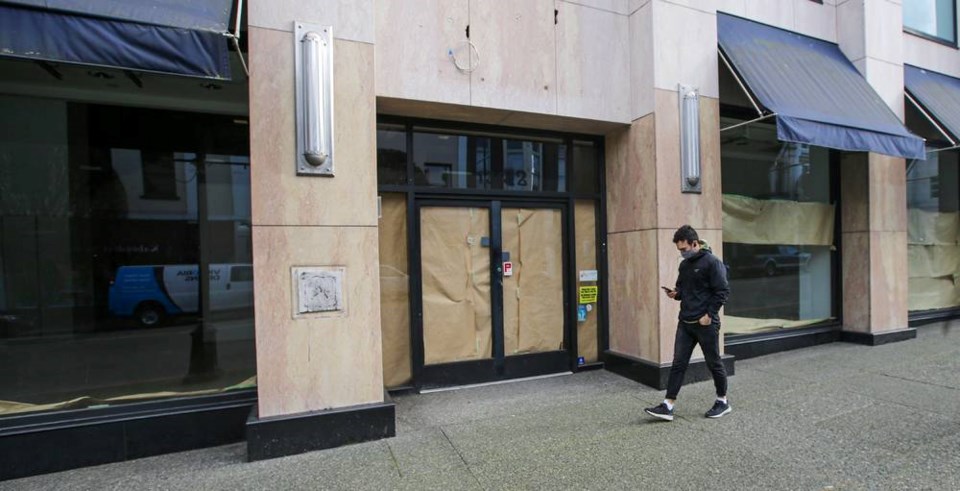Downtown Victoria’s retail vacancy rate doubled last year but remains low thanks to government programs geared to back business during the pandemic, states a new Colliers Canada report.
The rate moved from 3.1 per cent in the fourth quarter (October to December) of 2019 to six per cent in the same quarter in 2020, the report said.
That figure would likely have been substantially higher if not for government support which helped retail and restaurant operators, Graham Smith, senior vice-president at Colliers’ Victoria office, said Monday..
“Wage subsidies, rent subsidies and other small business programs have combined to minimize the damage to downtown businesses,” said Colliers’ local retail market report for the fourth quarter of 2020.
“Some of our more obvious holes are down in the tourist area [on] lower Government [Street], where we typically don’t see any vacancy,” Smith said. “But generally speaking, most tenants are still open.”
Last week, the federal government announced cruise ships would be barred from Canadian ports until 2022 because of health and safety concerns, similar to last year. Many of Victoria’s hospitality businesses, including adventure tourism and attractions, count on the hundreds of thousands of visitors who typically arrive annually via these ships.
“For the tourist sector, it is pretty hard to be optimistic when you see another year of really reduced sales. That will be definitely be a challenge for that sector,” Smith said.
“Really specific tourist retailers are just not set up to pivot to the local market in a way that they can achieve anywhere near the volumes that they do from those cruise ships.”
Greater Victoria’s shopping centre vacancy rate climbed slightly from five per cent in the final quarter of 2019 to 5.8 per cent in same months last year, Smith’s report said.
That result was “lower than we expected given the challenges that interior mall retailers have been facing.”
“Part of the reason for this outcome is once again government subsidies” and the fact a number of retailers that are in Companies Creditors Arrangement Act status, such as Aldo and Le Chateaux, are still operating stores. This may change as things unfold in 2021.”
Smith is hoping the retail market rebounds this year by the time governments pull back on programs.
“If we can get people in offices in a large way before the funding is withdrawn,” that will give retailers the opportunity to hang on even if tourism is not fully recovered, he said.
The state of the retail sector will be easier to understand as the year unfolds and vaccinations are rolled out.
There is no question that a “timely and broad-based vaccination program will have an immediate and positive impact on sales for retailers and more importantly, for restaurants and hospitality venues in Victoria,” Smith said.
“The next market test will be balancing the eventual pull back from government subsidies with an expected increase in office workers returning to the core and tourism gradually strengthening,” Smith’s report said.
“We do predict that this balancing act will be difficult to time perfectly for all retailers, which will likely create additional pressures. Additional retail vacancy in the latter part of 2021 may be the result.”
Despite uncertainty, Smith anticipates that the market will maintain the status quo for most of this year.
cjwilson@timescolonist.com



